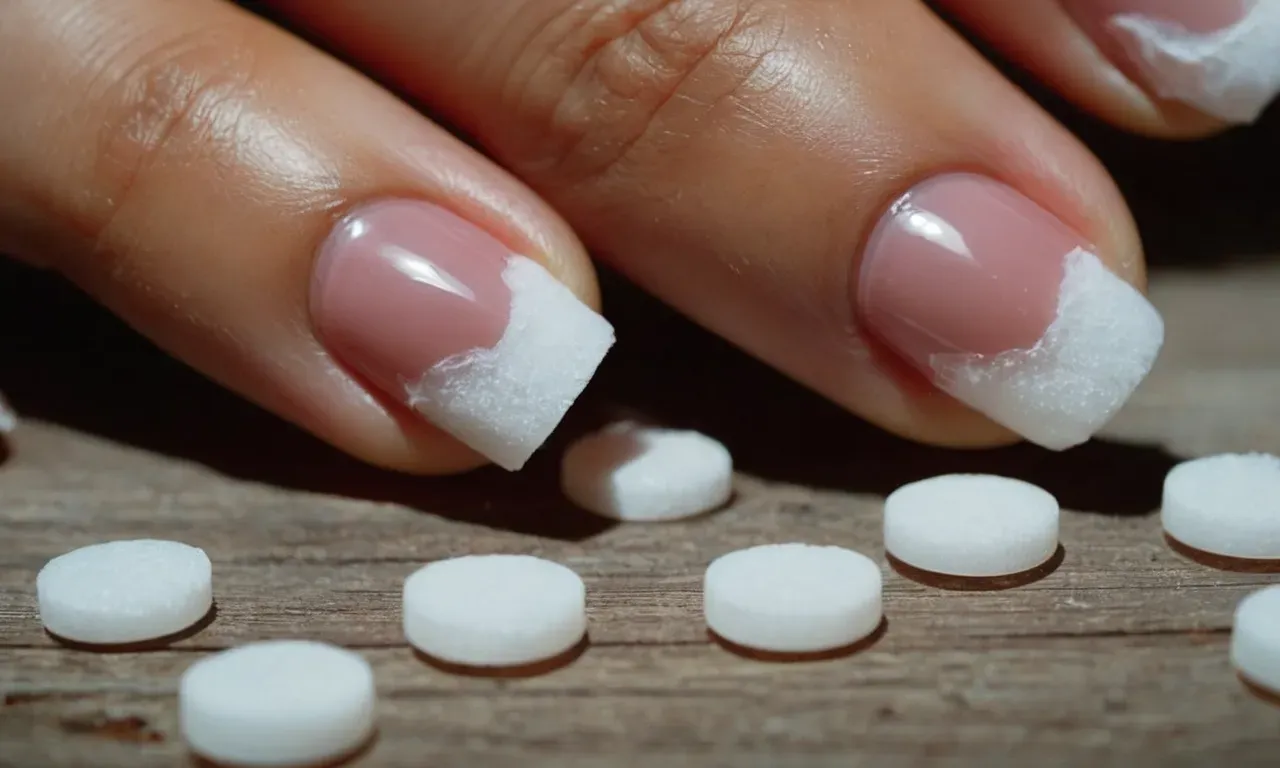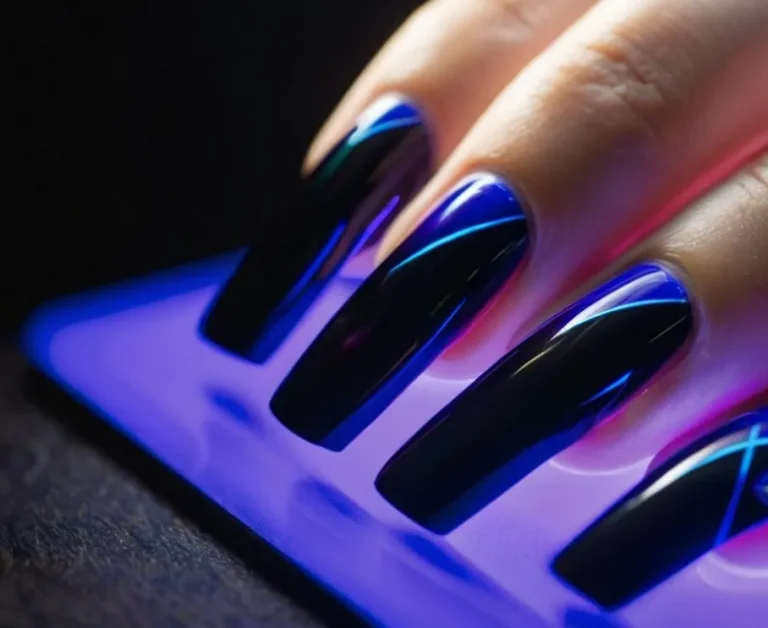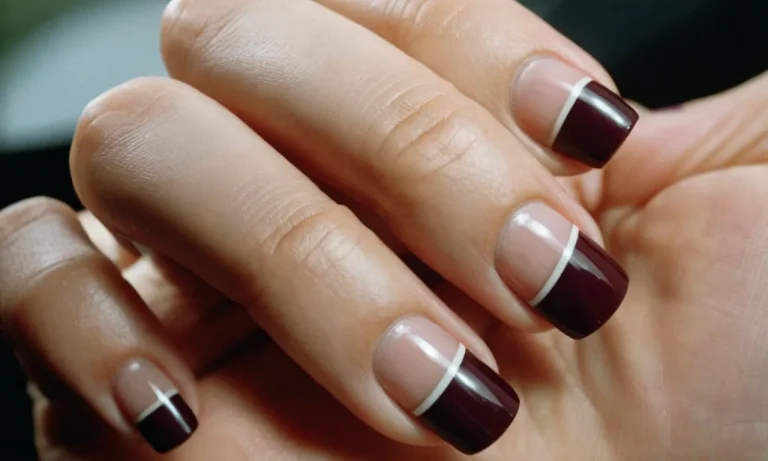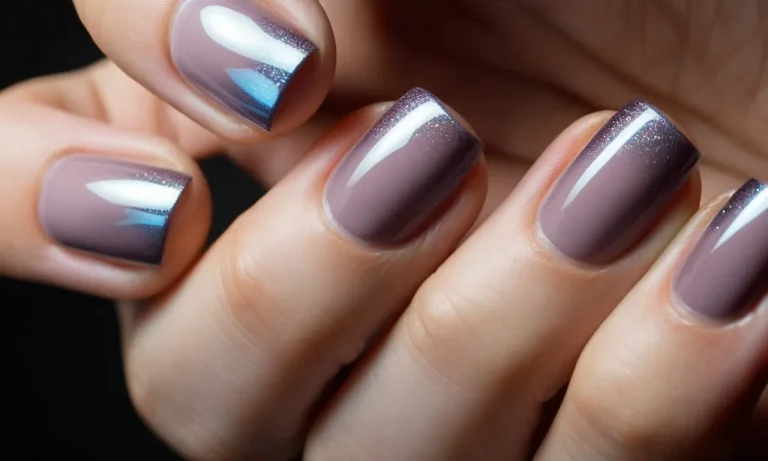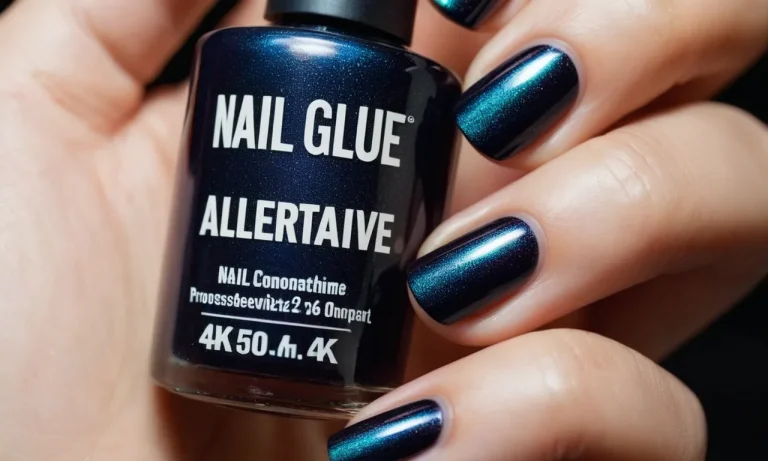How To Remove Shellac Nail Polish: A Step-By-Step Guide
Removing shellac nail polish can be a challenge, but with the right products and techniques, you can safely and effectively take it off at home. Shellac is a strong, gel-like polish that needs to be soaked off, rather than just peeled or scrubbed off like regular nail polish.
If you’re short on time, here’s a quick answer to your question: To remove shellac polish, you’ll need pure acetone, cotton balls, foil, a nail file and buffer. Soak cotton balls in acetone, wrap them around each nail with foil to hold it in place for 10-15 minutes.
Then use a wooden stick to gently scrape off the softened shellac. File and buff nails to remove any remaining residue.
Gather the Proper Removal Supplies
When it comes to removing a strong polish like shellac, having the right tools is essential for easy, damage-free removal. Here are the key supplies you’ll need:
100% pure acetone – Avoid acetone mixtures
100% pure acetone is a must-have for removing shellac polish. The pure formula works quickly to break down the shellac. Avoid acetone mixtures, which are diluted and won’t work as effectively.
Cotton balls or pads
You’ll need something absorbent to soak the acetone and apply it to your nails. Cotton balls or rounded pads work well for this.
Aluminum foil – To wrap around nails
Wrapping each finger with aluminum foil allows you to neatly contain the acetone over the nail plate to optimize the breakdown of the polish.
Nail file and buffer
A file comes in handy for gently removing any last bits of stubborn shellac polish after soaking. A buffer smooths and shines the nails after removing all traces of polish.
Cuticle stick or wooden stick – For gently scraping off polish
A cuticle pusher/stick or even a wooden stick or orange stick can help gently scrape off shellac polish that is starting to break down from the acetone but still clinging to the nails.
Petroleum jelly – To prevent skin dryness
Dabbing petroleum jelly around the nail cuticles and on the fingers can protect the skin from drying out from the acetone.
Old towel – To catch polish drips and residue
Having an old towel or paper towels nearby prevents messy drips and catches residue as you remove the polish.
With the right combination of acetone, tools for application and removal, and accessories for protection and easy cleanup, you’ll be ready to remove even the most stubborn shellac manicure with ease.
Prep the Nails for Removal
Remove any regular nail polish from nails using regular nail polish remover
Before tackling the shellac polish, it’s essential to remove remnants of regular nail lacquer from the nails first. Acetone-based polish removers easily break down and dissolve regular polishes. Soak a cotton pad with the remover and hold it against each nail for about 10 seconds to allow the chemicals to penetrate, then gently slide the pad along the nail to wipe away color.
File off the top glossy layer of the shellac polish
Shellac has an extremely hard, glassy finish that resists removal. Filing off this top layer with a coarse 100/180 grit nail file opens up the shellac polish so products can permeate and break bonds. File gently in one direction across the entire nail surface until dull and rough.
Push back and trim cuticles if needed
Exposing more of the actual nail plate by tidying up the cuticles allows better access for removal solutions. Use a metal cuticle pusher to gently nudge back overgrown skin, then nip off any excess with sterilized cuticle nippers.
Eliminating dead skin prevents potential damage and pain when working at lifting off old shellac.
Apply petroleum jelly to skin around nails to prevent drying
The skin surrounding nails often suffers collateral damage from shellac removal chemicals and scrubbing. Protect tender skin by coating the perimeter of nails with a shield of petroleum jelly before soaking them. Reapply more jelly as needed after soaking to keep the barrier intact.
Soak Nails in Acetone-Soaked Cotton
Removing stubborn shellac nail polish can be a hassle, but soaking nails in acetone-soaked cotton is an effective method. Here’s a step-by-step guide on how to properly soak shellac nails in acetone:
Saturate cotton balls or pads with pure acetone
Make sure to use 100% pure acetone, not diluted acetone or nail polish remover, which may not work as well. Pour enough acetone onto cotton balls or pads to completely saturate them.The more acetone used, the faster it will break down the shellac.
Wrap each nail tightly with foil, securing the acetone-soaked cotton ball over nail
Place an acetone-soaked cotton ball on top of each fingernail and wrap tightly with foil or a small piece of cling wrap to hold it in place. The foil helps trap the acetone against the nail.
Let soak for 10-15 minutes; check after 10 minutes
Wait 10-15 minutes before removing the foil and checking if the shellac polish is ready to scrape off. Set a timer so you don’t accidentally over-soak. After 10 minutes, gently scratch the surface of one nail; if the polish isn’t softened yet, re-wrap and let soak a bit longer.
Re-saturate cotton as needed until polish is ready to scrape off
If needed, re-saturate the cotton balls with more acetone and re-wrap nails for another 5 minutes until the shellac softens enough to scrape away easily. Avoid soaking too long, as it can dry out the nails.
Once shellac polish is softened, use a wooden cuticle pusher to gently scrape off the polish. Finish by buffing nails lightly and applying cuticle oil or moisturizer to prevent dryness. With the right soaking method, removing shellac at home can be fast and easy!
Gently Scrape Off Polish
After soaking your nails in acetone for 10-15 minutes, the shellac polish should be softened enough to gently scrape off. Using an orangewood stick or other wooden manicure stick, carefully slide the stick under the polish to gently lift it away from the nail surface.
Taking care not to scratch or damage the natural nail surface, lightly scrape to remove the bulk of the softened shellac.
Take care not to scrape or damage nail surface
When scraping off the polish, it’s vital to avoid scraping or otherwise damaging the natural nail surface. Scraping too aggressively can actually scratch off layers of the nail plate, leaving nails thin and brittle over time. Instead, use a light touch and work slowly to protect nail health.
Orangewood sticks are ideal as they are soft enough not to damage nails. Metal tools like cuticle pushers should not be used as they can more easily scratch or gouge nails. If needed, file nails to remove staining after shellac removal rather than scraping hard at nails.
Wipe away any excess softened polish with an acetone-soaked cotton ball
After gently lifting away the bulk of the shellac with the wooden stick, use an acetone-soaked cotton ball to remove any remaining traces of polish on the nails. Gently wipe over nails, taking care around the sidewalls and cuticles. The acetone will dissolve the last bits of sticky polish.
Be sure to use 100% acetone rather than diluted solutions, as this works most effectively at breaking down the shellac. Press down firmly but avoid rubbing vigorously over nails, which can cause damage over time. Change cotton balls frequently so polish remnants don’t simply get moved around.
Go slowly and carefully to remove all traces of shellac from nail
Removing shellac polish requires patience – trying to rush the process can cause frustration and increase the likelihood of nail damage occurring. Work systematically on one nail at a time, allowing sufficient soak and scrape time for each.
10-15 minutes per nail is often needed to fully break down the polish.
Check nails closely under good lighting to spot any remaining polish, especially around the proximal nail fold near the cuticle. Missing any bits of polish can allow fungus or bacteria to grow, so thoroughly remove all traces. An LED lamp can help illuminate any hidden polish.
If using e-files or buffers after shellac removal, keep them moving constantly to avoid heat buildup which can damage nails. Work at low speeds and moderate pressure. Avoid filing too aggressively near proximal folds and sidewalls, the thinnest and most vulnerable nail areas.
Taking proper time and care with each step in the shellac removal process helps ensure nails remain healthy and strong. Rushing through scraping off polish almost always leads to a less than perfect finish.
Clean Up and Moisturize Nails
Use a nail file to gently buff away any remaining bits of polish
After soaking off the majority of your shellac polish, there may still be leftover flecks stuck to the nails. Use a medium grit nail file and gently buff the nail surface in one direction to remove these remnants. Do not saw back and forth aggressively, as this can damage the nails.
Focus on filing the tops of nails and free edges rather than near the cuticles to avoid irritation.
Wash and rinse nails thoroughly with soap and water
The acetone soak leaves behind nail product residue and dried out skin cells. Thoroughly cleanse nails by washing with warm water and a mild soap. Antibacterial hand soap is ideal for sanitizing while removing debris. Rinse very well, as soap scum left on nails can lead to breakage.
Apply cuticle oil or thick moisturizing cream to condition nails and cuticles
Soaking nails in acetone is extremely drying. Replenish much needed moisture by massaging skin-nourishing oils into the nails and surrounding skin. Jojoba, vitamin E, and coconut oils are great options. For severely dehydrated cuticles, apply a rich hand cream after the oil absorbs.
Popular deep conditioning treatments include:
- Neutrogena Norwegian Formula Hand Cream
- O’Keeffe’s Working Hands Cream
- L’Occitane Shea Butter Hand Cream
Let nails fully dry and breathe before repolishing
Allow nails to recover overnight or for at least a few hours before applying polish again. Added benefits of giving nails a break between manicures:
| Nails rebuild strength and thickness | Moisture levels normalize |
| Nail discoloration fades | Reduced risk of fungal/bacterial infections |
The average individual gets their nails done every 2-3 weeks. Allowing 1-2 weeks between polish applications allows the nail bed to recover and lowers the risk of permanent damage over time.
Conclusion
Removing shellac polish takes patience, but with the right tools and technique you can safely DIY it at home. Be sure to use 100% pure acetone and gently scrap off the softened polish after soaking to avoid damage. Moisturize nails after to counteract the drying effects of acetone.
Your nails will be ready for a fresh new shellac or regular manicure in no time!

